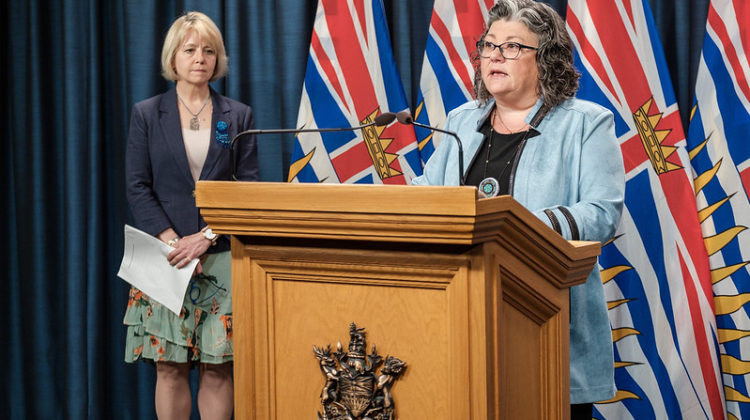14% of overdose deaths in BC between January and June of last year were among Indigenous people.
That’s according to new data released by the First Nations Health Authority.
Acting Chief Medical Officer, Dr. Shannon McDonald told Vista Radio while additional treatments are coming, they are best effective when taken on a daily basis.
“Things like opioid agonist therapy or the incoming of more safe supply programs require that individuals access those supplies on a daily basis. If you live in a community that is 50 kilometres away from the closest pharmacy that becomes a big challenge.”
“We have quite a few nurses who work in communities who provide this kind of care who are getting training to be able to prescribe those treatments and supply them in a community setting. But, those are fairly new from a regulatory point of view and it takes time.”
Northern BC has the highest proportion of Indigenous people and communities in the province. This also can bring a set of unique challenges like vast distances between communities, small service centres along with a harsher climate as well as remoteness and isolation.
Last week, a panel of experts is calling for a safer supply as well as an evidence-based system to reduce deaths from illicit drugs in BC.
The recommendations, which are being championed by the BC Coroners Service are included in a report examining over 6,000 deaths from illicit drug toxicity between August 1st of 2017 to July 31st of 2021.
The report called BC Coroners Service Death Review Panel: A Review of Illicit Drug Toxicity Deaths unveiled the primary cause of these fatalities was the toxic drug supply currently in our province as well as the existing policy framework.
According to the Coroners Service, illicit drug toxicity is the leading cause of unnatural death in BC, surpassing homicides, suicides, motor vehicle incidents, drownings, and fire-related deaths combined.
Northern Health has the highest illicit drug toxicity rate among all the health authorities in BC at 74.5 per 100,000 people – 20 points ahead of Vancouver Coastal (54.2).
With that in mind, McDonald believes it has become quite clear the public health emergency on illicit drugs is no longer exclusive to Vancouver’s Downtown Eastside.
“We know that is not the case and we are seeing more and more the events and deaths from overdoses increasing in more rural and remote communities.”
“Access to drugs is not limited to the Downtown Eastside and people’s histories and trauma within the context of COVID might have been more inclined to be using alone, which puts them at significant risk.”
In 2018, Greyhound ceased bus operations in Prince George and Northern BC leaving many scrambling to find an alternative form of transportation.
While McDonald admires the current BC Bus North service for stepping up to the plate, many rural and remote communities in the north do not have access to transportation while the ones that do are struggling to afford them due to rising fuel prices.
“We are always worried. The Highway of Tears occurred primarily because people used that to hitchhike to get to where they needed to go. We know there are programs out there to provide safe and reliable transportation are very important but they are not simple to accomplish.”
In 2020, 254 First Nations people died in BC due to toxic drugs.
Furthermore, Indigenous women accounted for 32 percent of toxic drug deaths for First Nations people, double the rate of non-First Nations women in BC during that year.
While the 2021 numbers won’t be made public for about another month, McDonald hinted the issue is getting worse among this demographic, which can be stigmatizing.
“That can be really challenging and then layered on top of that you have the existing racism that’s been well identified. One of the issues for many young women is the fear of having child and family services come into the picture and remove their children if it becomes evident that they are using.”
“Oftentimes, rather than offering mom treatment supporting the family, the first reaction is apprehension. So, there are layers of reasons why women may be involved and our proportion of women (using drugs) has gone up from last year.”
Out of the 19 fatalities, Northern Health tallied, nine of those were in Prince George according to the BC Coroners Service.




